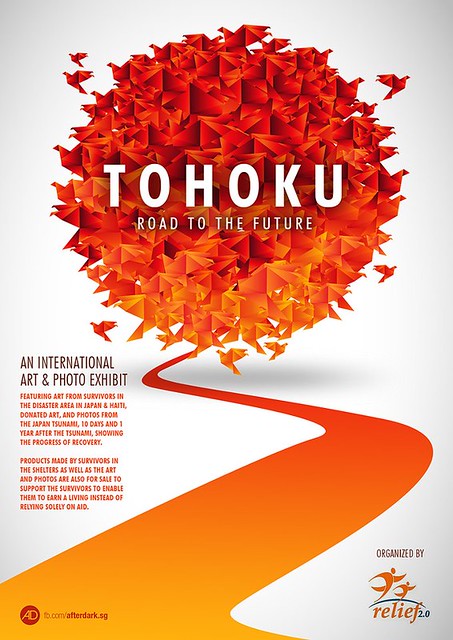Had you ever wonder how a disaster zone looks like? I guess most people will refer to the images shown by news channels when misfortune happened. But had you wonder about the recovery process, or what happened to the survivors?
This is an International Art and Photo Exhibit featuring art from survivors in the disaster area in Japan and Haiti, donated art, and photos from the Japan Tsunami, 10 days and 1 year after the Tsunami, showing the progress of recovery. Products made by survivors in the shelters as well as the art and photos are also for sale to support the survivors to enable them to earn a living instead of relying solely on aid.
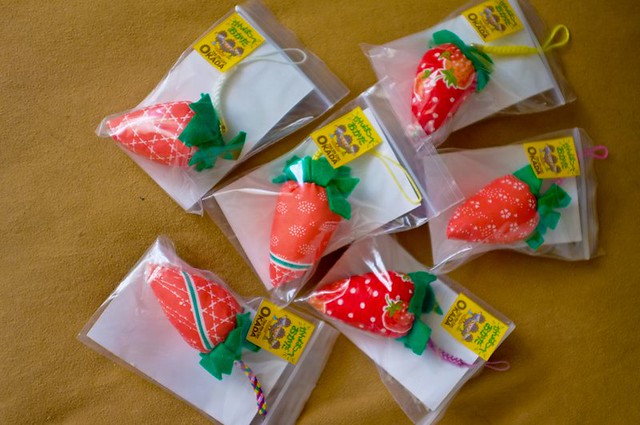
Strawberries from Sendai, made by survivors who cannot work on their Strawberry fields due to the fields being soaked in salt water
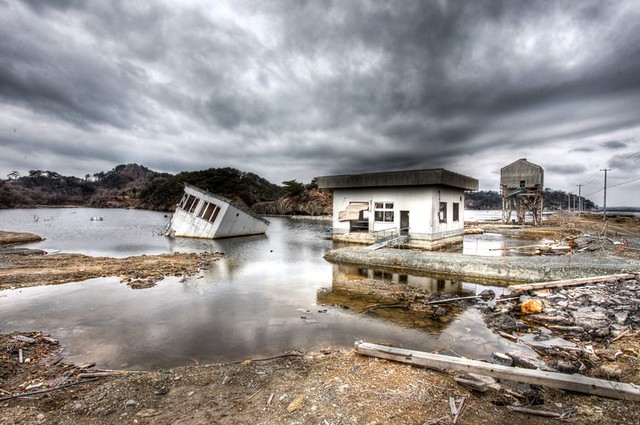
Not all places are fixed yet after a year, and most people forget about the survivors. Photo taken in March 2012
“Tohoku: Road to the Future” features photos taken by co-founder of Relief 2.0 Mr Robin Low, of Tohoku one week and one year after the earthquake and tsunami, to showcase the disaster area’s recovery progress. Also on display will be pieces by artists Isao Hasegawa, a Tohoku survivor, and Miler Ramirez. Products from Markets of Hope, a Relief 2.0 initiative, handicrafts made by the survivors will be on sale at the event, with proceeds going to buy more products from shelters in Tohoku.
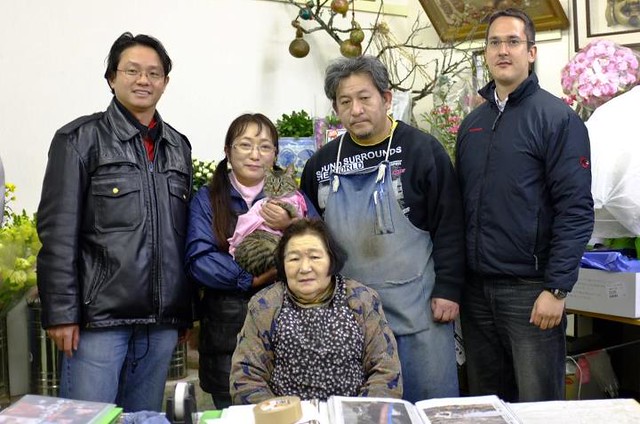
Mr Robin Low (Extreme Left) , early this year when Relief 2.0 revisit Survivors
“I want to change the public’s perception on disaster recovery, from the traditional model of ‘donor-recipient’ to ‘conscientiousness buyer-generator of wealth’. When the survivors who make a quality product are able to make a living to support themselves, they can get their dignity back instead of just relying on charity and donations. When these survivors earn money, they can buy their supplies locally, thus help in the restart their economy.” Mr Low said
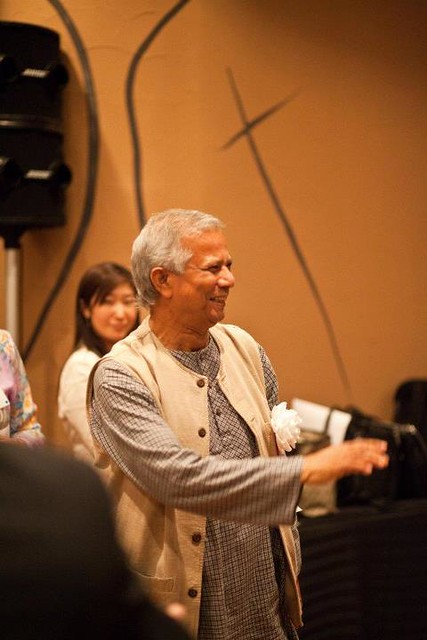
Nobel Peace Laureate Professor Muhammad Yunus
“Tohoku: Road to the Future” was first opened in Fukuoka by Nobel Peace Laureate Professor Muhammad Yunus on July 19. After stopping in Japan and Singapore, the travelling exhibition will be making its way to other parts of Southeast Asia, Europe, North and South America and Africa.
Part of Relief 2.0’s on-going project is “Markets of Hope” – a global marketplace of products and services from disaster areas and communities in disadvantage. Its goal is to promote disaster recovery and human development with inclusion, dignity, generation of wealth and opportunities.
While the products sold at the marketplace generate revenue for their makers in Latin America, the Caribbean, Africa and Asia, its revenue funds social entrepreneurship and sustainable recovery initiatives in Haiti and Japan.
Relief 2.0 is an organic movement of multidisciplinary volunteers and partner organisations around the world promoting efficient disaster response and sustainable disaster recovery through the active engagement of social media and local stakeholders.
Relief 2.0 are promoting the new kind of mindset, changing the current model, "donor-recipient" to "conscious buyer-generator of wealth"
Let show some support for the survivors. There will be food and refreshments available during the event.
Friday, 21 September 2012 ; 5pm ~ 9pm
At Ngee Ann Kongsi Auditorium, NUS University Town
For more details refer to:
http://www.facebook.com/events/265425136907793/
http://www.marketsofhope.com/
www.relief20.com/
*Images by Relief 2.0

Artitute Contributors
Our art news contributors come from all walks of life. We are on the lookout for regular art patrons who write about the arts. Contact us if you would like to be a contributor on Artitute.com.
